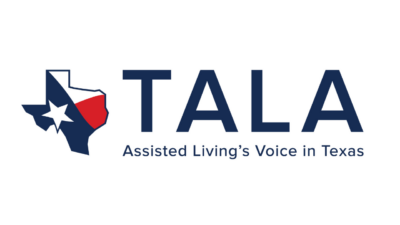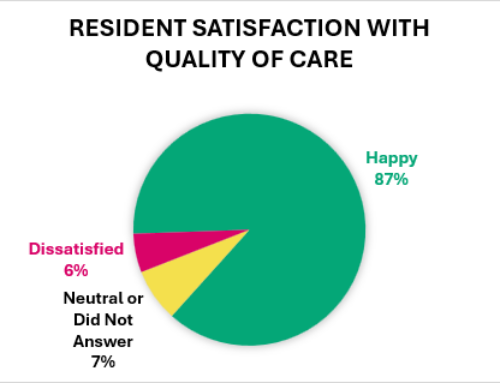This article is the fourth of a five-part series Become a Great Senior Living Leader by the TALA Workforce Development Committee. Stay tuned each week for the next in the series.
There are multiple traits that make a successful leader in Senior Living: high emotional intelligence, integrity, respect, self-awareness, communication. One trait that is also key in moving the needle in your business is consistency.
What Are the Benefits of Leading with Consistency?
Leading with consistency means that a leader builds a sense of security with both their team and the residents and families they serve. There are multiple benefits of Executive Directors that lead with a commitment to consistency, including:
- Building a sense of trust and stability with the team and customers
- Improved outcomes
- Allows for systems to sustain even in the absence of the leader
- Increases likelihood of positive survey results
Building a sense of trust and stability with the team and customers
Now more than ever, employee engagement is crucial for reducing turnover. Interviews and studies of employees show that they are looking for environments where they feel valued and appreciated. Having a manager that is consistent in both their temperament and behavior allows employees to feel a sense of confidence in making mistakes and to be vocal with any issues. Being able to anticipate how someone responds can easily take away unnecessary anxiety.
Improved Outcomes
When team members have rhythm of their day and know what to expect day in and day out, it only comes to a natural conclusion that you will start to see positive results across the board – in clinical outcomes, occupancy, quality of service. One can expect to experience a snowball effect: once you have a leader that is dedicated to consistent deliverance of processes, resident and family satisfaction tends to rise. This inevitably leads to greater occupancy and resident satisfaction.
Sustained Systems in Absence of the Leader
Have you ever experienced a situation where one manager (be it a department manager or Executive Director) leaves for any reason (PTO, Leave of Absence, or leaves the job completely) and the entire department or establishment seems to crash in their absence? This is the exact situation you want to avoid as a leader. As a manager/leader, you want to assure that you a conducting the orchestra, not playing all the instruments. While there are certainly situations that require a director to fill in, these should be short-term based.
Creating a culture of mutual accountability is key to sustaining systems and assuring everyone understands what is expected of them. This process should include frequent communication or ‘check ins’ with employees so they are getting feedback on what they are excelling in, where performance needs some attention, as well as to identify any resources needed for them to complete their jobs.
Frequent check-ins can be formal or informal. The most popular formal check-in is the yearly performance evaluation. Of course, team members need much more communication than a yearly meeting. These could also be in the form of weekly or monthly 1:1s that are a scheduled and uninterrupted time that an associate has with their direct manager. Ideally, there is a standing agenda to the meeting that may involve answering the same questions or covering projects, etc. In addition, don’t underestimate the smaller, at the moment, coaching sessions that allow you to give real time feedback to a team member.
When you have a team where everyone understands their roles and responsibilities, there is an environment that allows feedback and identifying any resources needed to do a job, and the team members feel appreciated and valued: it is inevitable that you will see a reduction in burnout and turnover.
Increased Likelihood of Positive Regulatory Outcomes
It is no surprise that when you have a culture of consistency that is dedicated to policies and standards and employee engagement, then chances are more likely that you will also see positive regulatory outcomes with your state survey process.
We know that the survey process includes observation as well as resident/family and employee interviews. When customers receive consistent communication from leadership and outcomes are delivered consistently, they will have positive feedback to share. In addition, how leadership responds to a service failure is crucial as well: identifying the error or lapse in service, apologizing, and recognizing the impact on the resident, and most importantly, a commitment to rectifying the mistake with consistent and frequent communication touch points, are more likely to avoid a complaint call to the state.
Employees that feel appreciated and are confident they understand what is expected of them in their roles and that they have the resources to complete their responsibilities, are more likely to have positive interviews with surveyors.
Lastly, a robust Quality Assurance and Performance Improvement process is key to positive regulatory outcomes. Does your team meet consistently to review issues identified in various departments? Is there a process for implementing action plans to address any issues that are identified? Does your QA process involve feedback from your front-line staff? Do you have a few individuals from the front line participate in your regular QA meetings, or is it just department leaders? Ideally, you want your QA process to involve feedback from your front-line team as well because they often can provide insight into issues and opportunities that managers don’t see or aren’t aware of. In addition, having a selected few employees participate can also build engagement because they can present solutions to the organization.
We know that as leaders in healthcare we must be flexible and ready to pivot to react to change. The pandemic was the best example of our learning how to respond, and change quickly, to an identified need. We all became agile through that process and we must continue to be open to change in our environment. A leader that executes on providing strong anchors of stability are more likely to lead teams that excel in this environment.
Questions to consider to identify if you are leading with consistency:
- Do your meetings start at the same time, place, and day that they are scheduled?
- Do meetings have an agenda of what is covered so that staff know what to expect?
- Are all staff held accountable to the same policies? For example, is everyone held to the same standards for attendance and punctuality?
- Is there a format for communicating to families and residents in a manner that they can expect? For example: a weekly email from the Executive Director’s Desk that goes to everyone; a Monthly newsletter that comes out on the 1st of each month; Resident Council/Feedback meetings are always held the second Tuesday?
- Do you have a process to overcommunicate following a service failure? For example, for a significant failure, you may tell a family member you will follow up with them weekly (or perhaps even daily) for an interim time to help build trust?
- Do employees have scheduled, uninterrupted 1:1 time with the department manager outside of the yearly performance evaluation?
- Is the QA meeting held at the same time monthly?
- Does the QA meeting include a few select front line staff members to participate in and provide feedback?
- Do meetings and processes continue even in the absence of the Director or Manager?
---------
Written by TALA Workforce Development Committee Member Samantha Jones of Legend Senior Living
This article is the fourth of a five-part series Become a Great Senior Living Leader by the TALA Workforce Development Committee. Stay tuned each week for the next in the series.




